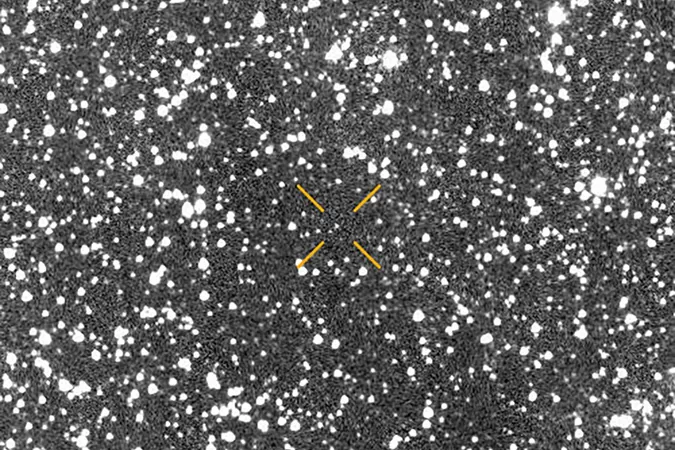
The Amazing Discovery of Interstellar Comet 3I/ATLAS: The Image that Changed Everything!
2025-09-16
Author: Wei
A Cosmic Sensation Taking the Year by Storm
As we look back on 2025, one astronomical event is sure to steal the spotlight: the breathtaking interstellar comet 3I/ATLAS. Since its stunning discovery in June, this celestial wanderer has ignited our imaginations and curiosity about the universe beyond our Solar System.
What Makes 3I/ATLAS Extraordinary?
Unlike most comets, which hail from within our own Solar System, 3I/ATLAS comes from the vast unknown of interstellar space. Understanding its composition offers astronomers invaluable insights into other star systems and how they differ from ours.
Unveiling the Secrets of Space Rocks
Initial observations from the James Webb Space Telescope have revealed the presence of water ice, water vapor, carbon monoxide, and carbonyl sulfide on 3I/ATLAS. Amazingly, these findings suggest that the dust and ice there are quite similar to those found in our own Solar System's comets.
The Moment of Discovery: A Leap into the Unknown
Let’s rewind to that pivotal moment in early summer 2025 when this astonishing comet was first spotted. The discovery was made by ATLAS (Asteroid Terrestrial-impact Last Alert System), a project by the University of Hawaii, funded by NASA.
ATLAS serves as a high-tech early warning system, designed to detect hazardous asteroids while it keeps a watchful eye on the night sky, utilizing four automated telescopes located in Hawaii, Chile, and South Africa.
How Do They Find Celestial Intruders?
These telescopes regularly scan the sky, taking a series of images every 12 minutes. By comparing these images, they can detect any moving objects that disrupt the static background of stars. This method—known as 'blinking'—is how 3I/ATLAS was discovered, with the ATLAS telescope in Chile leading the charge.
The World Watches and Waits
With 3I/ATLAS making its way closer to the Sun, Earth, and Mars this autumn, astronomers worldwide are eager to further observe this celestial marvel. Prominent telescopes like the Very Large Telescope and the Hubble Space Telescope have already turned their lenses toward it, and even Mars rovers and NASA's Juno mission at Jupiter may soon catch a glimpse.
The Journey Ahead: A Cosmic Adventure
While 3I/ATLAS won't orbit the Sun, it is a fleeting visitor passing through our Solar System on its epic journey across the galaxy. Scientists are scrambling to gather as much information as possible during its brief stay.
A New Era in Astronomy Awaits
Future sky surveys, like those from the newly operational Vera Rubin Telescope, promise to unveil many more interstellar objects. We're on the brink of a groundbreaking era in our understanding of primordial space rocks from the cosmos. Who knows what other wonders await us as we continue to explore the universe?



 Brasil (PT)
Brasil (PT)
 Canada (EN)
Canada (EN)
 Chile (ES)
Chile (ES)
 Česko (CS)
Česko (CS)
 대한민국 (KO)
대한민국 (KO)
 España (ES)
España (ES)
 France (FR)
France (FR)
 Hong Kong (EN)
Hong Kong (EN)
 Italia (IT)
Italia (IT)
 日本 (JA)
日本 (JA)
 Magyarország (HU)
Magyarország (HU)
 Norge (NO)
Norge (NO)
 Polska (PL)
Polska (PL)
 Schweiz (DE)
Schweiz (DE)
 Singapore (EN)
Singapore (EN)
 Sverige (SV)
Sverige (SV)
 Suomi (FI)
Suomi (FI)
 Türkiye (TR)
Türkiye (TR)
 الإمارات العربية المتحدة (AR)
الإمارات العربية المتحدة (AR)